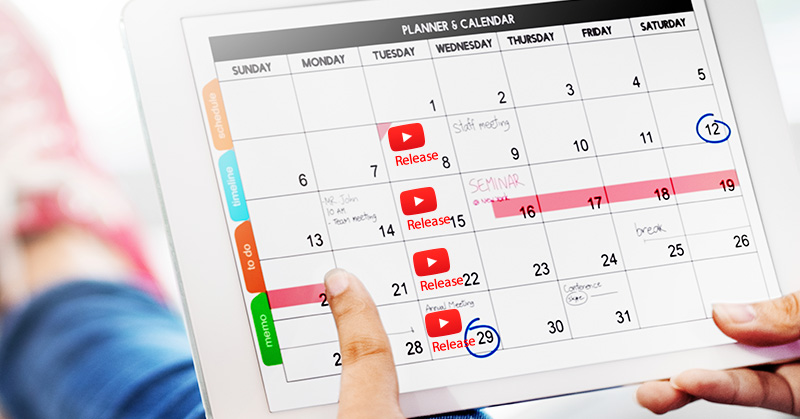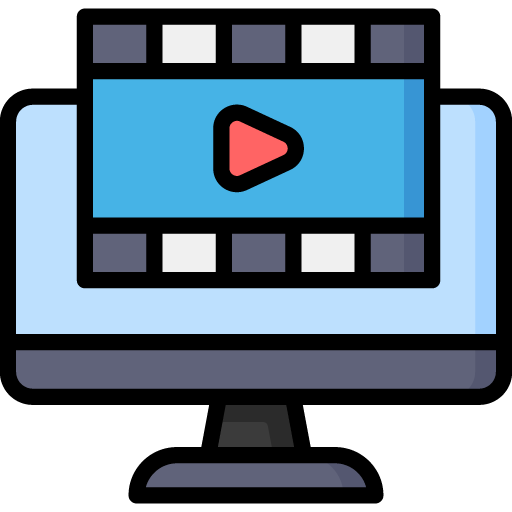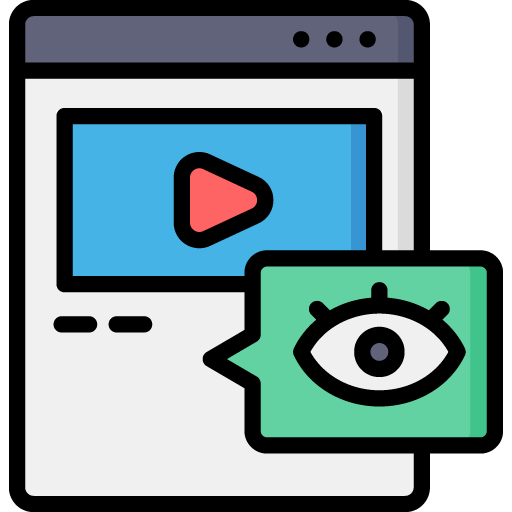How to Plan and Organize Your Video Schedule to Maintain Consistency and Grow Your Channel
Creating a YouTube Content Calendar:
How to Plan and Organize Your Video Schedule to Maintain Consistency and Grow Your Channel
If you’re serious about growing your YouTube channel, having a consistent and well-organized content plan is non-negotiable. The platform’s algorithm rewards consistency, and your audience will come to expect regular uploads. But in a sea of content, creating and maintaining a consistent posting schedule can feel overwhelming. This is where a YouTube content calendar comes in.
A content calendar helps you plan, organize, and track your video production and publishing schedule, ensuring you maintain consistency while staying ahead of trends. In this guide, we’ll walk you through the process of creating a YouTube content calendar and optimizing it for maximum growth.
Why a Content Calendar is Crucial for YouTube Success
The Importance of Consistency
YouTube’s algorithm favors channels that upload regularly. Consistency tells the algorithm that you’re an active creator, and this can increase the likelihood of your videos being recommended to users. A content calendar helps you maintain that consistent output, even when life gets busy.
Building a Routine for Your Audience
Just like TV shows have specific airtimes, your audience will become accustomed to your upload schedule. If they know that you post new videos every Tuesday at 5 PM, they’re more likely to return to your channel. A content calendar can help you plan ahead so that you never miss these scheduled uploads.
Enhancing Creativity and Reducing Stress
When you’re working with a clear plan, creativity can flourish because you’re not scrambling at the last minute for ideas. A content calendar gives you the time and space to brainstorm, research, and refine your ideas before the camera even starts rolling.
Steps to Creating a YouTube Content Calendar
Step 1: Defining Your Channel’s Goals and Niche
Before you begin scheduling, it’s essential to clearly define your channel’s goals. Are you focused on growing your subscriber count? Are you aiming for more views, or is your primary focus driving engagement through likes and comments? Once you have your goals in mind, determine what niche or topic your channel will revolve around. The clearer your niche, the easier it will be to plan relevant and engaging content.
Step 2: Identifying Your Content Pillars
Content pillars are the core themes or topics that your videos will center around. For example, if you run a fitness channel, your content pillars could include workout routines, nutrition tips, and fitness challenges. These pillars will guide your content creation and ensure variety while staying within your niche.
Step 3: Brainstorming Video Ideas
Once you’ve identified your content pillars, brainstorm as many video ideas as possible for each pillar. Think about evergreen content (videos that will always be relevant) and trending content that may have a limited lifespan but can bring in views fast. Make sure you’re catering to both new and existing subscribers with a mix of introductory videos and advanced topics.
Step 4: Researching Trends and Audience Preferences
You don’t have to guess what your audience wants to see—you can find out! Use tools like YouTube Analytics to discover which topics or types of videos resonate most with your viewers. Additionally, use platforms like Google Trends and TubeBuddy to research what’s currently trending in your niche.
Step 5: Setting a Realistic Upload Schedule
The next step is setting a consistent upload schedule that you can realistically stick to. If you’re new, start slow. It’s better to post one video every two weeks than to post three videos one week and nothing for the next month. Once you’re comfortable, you can gradually increase the frequency of uploads.
Choosing the Right Tools for Your Content Calendar
The tool you choose for your content calendar will depend on your personal preference. There are plenty of digital and physical options available.
Digital Tools
- Google Calendar: A simple, cloud-based solution that allows you to plan and schedule your content. You can color-code different types of content and even set reminders for shoot dates, editing, and posting.
- Trello: Trello is a project management tool that uses boards and lists to help you organize your content ideas. You can create separate boards for each month or week and move cards (ideas) from “In Progress” to “Published.”
- Asana: Similar to Trello, Asana allows for more detailed project management. You can assign due dates, track progress, and collaborate with team members if necessary.
Spreadsheet Options
If you prefer a more hands-on approach, tools like Google Sheets or Excel can help you manually track content deadlines, video ideas, and publishing dates.
Physical Planners
Some creators prefer to use physical planners or wall calendars to map out their content. This visual approach can serve as a daily reminder and help you visualize your schedule at a glance.
Organizing Your YouTube Content Calendar
Categorizing Content Types
YouTube offers various types of content such as long-form videos, Shorts, livestreams, and premieres. It’s important to diversify your content to engage different audience segments. For example, long-form videos may provide in-depth knowledge, while Shorts can grab quick attention and introduce new viewers to your channel.
Balancing Long-Form Videos, Shorts, and Livestreams
When organizing your content calendar, make sure to balance these different content types. For instance, you could schedule a livestream at the end of every month to engage with your audience directly and use Shorts to drive traffic in between full-length video releases.
Scheduling and Buffering for Time-Sensitive Content
Some content is evergreen, while other topics might be time-sensitive. For example, if you’re covering a trend or reacting to current events, ensure that your calendar has room for flexibility. You’ll also want to schedule buffer time for editing, revisions, and unforeseen delays.
Optimizing for YouTube SEO with Your Calendar
Timing for Trends and Keywords
When planning your content, use keyword research tools like Google Trends or TubeBuddy to time your videos around specific trends. For instance, if you’re running a tech channel and a new gadget is being released, plan your content around that launch to capitalize on search traffic.
Researching Tags, Titles, and Descriptions Ahead of Time
Your content calendar shouldn’t just focus on the video itself—it should also incorporate SEO planning. Research potential tags, craft compelling titles, and write optimized descriptions as part of the scheduling process. Doing this ahead of time will save you stress when it’s time to upload.
Staying Flexible with Your Content Calendar
Adapting to Changes and Trends
Even with the most well-planned content calendar, things will come up—whether it’s personal matters, a sudden trend, or a viral moment in your niche. It’s essential to stay flexible and leave some room in your schedule for unexpected changes.
Managing Unforeseen Delays and Burnout
Burnout is real, especially for content creators. If you start feeling overwhelmed, adjust your schedule to avoid taking on too much. Plan breaks and vacations into your calendar, so you can recharge without losing momentum.
Tracking Performance and Adjusting the Calendar
Using Analytics to Evaluate Success
Use YouTube Analytics to track the performance of your videos and understand what content resonates with your audience. If certain video types or topics consistently perform well, you may want to produce more of that content. On the flip side, if something isn’t working, don’t be afraid to pivot.
How to Tweak Your Content Plan for Better Results
Based on the performance data, tweak your content calendar. This could mean adjusting your upload frequency, changing content types, or exploring new topics that align better with audience interests.
A well-structured content calendar is an essential tool for any YouTube creator looking to grow their channel. It helps you stay organized, maintain consistency, and make informed decisions based on analytics. With a good content calendar in place, you’ll not only be able to produce quality content regularly but also stay ahead of trends, engage your audience more effectively, and prevent burnout.
So, get started today by outlining your goals, identifying content pillars, and brainstorming video ideas. Whether you use digital tools like Trello or stick to an old-school paper planner, the key is to be proactive and intentional with your planning.
A content calendar isn’t just a schedule—it’s a roadmap to your success. It allows you to focus on creating high-quality content without the stress of last-minute deadlines. And most importantly, it positions you to be a consistent, trusted content creator that your audience can rely on.
Remember, flexibility is crucial. Stay open to new trends, audience preferences, and unexpected opportunities, but always keep the core structure of your calendar intact. Over time, with the right strategies and adjustments, your calendar will evolve into an invaluable asset that drives growth, consistency, and community engagement for your channel.







 Edit Your Footage
Edit Your Footage
Leave a Reply